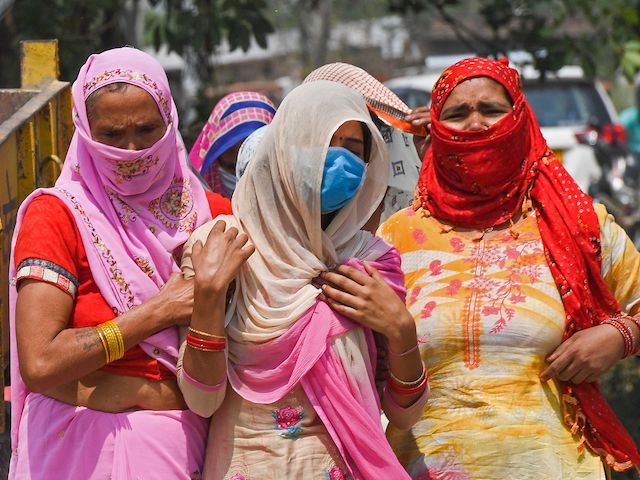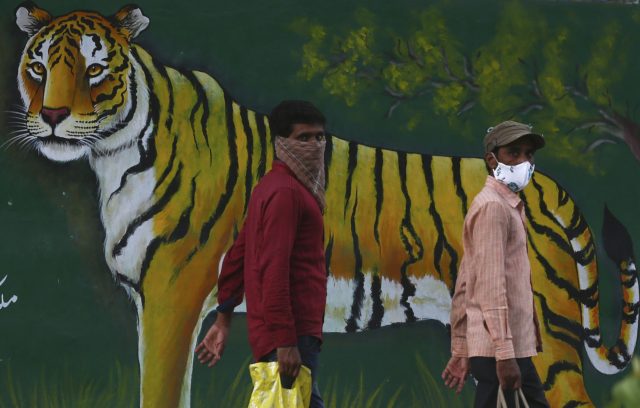The Indian Medical Association (IMA) on Thursday called for a return to wearing face masks in public places, citing the enormous surge of coronavirus cases in China and rising caseloads in some other countries, including the United States.
The IMA also advised returning to social distancing practices, avoiding large public gatherings, refraining from international travel if possible, getting vaccine booster shots, and immediately consulting with a doctor if coronavirus symptoms are observed.
“As of now, the situation is not alarming and therefore there is no need to panic. Prevention is better than cure,” the IMA said, although it asked the Indian government to begin ramping up hospital services and stockpiling medicine to deal with a potential outbreak.
“As per the available reports, nearly 5.37 lakh new cases have been reported in the last 24 hours from major countries like the USA, Japan, South Korea, France, and Brazil. India has reported 145 new cases in the last 24 hours, out of which four cases are of the new China variant, BF.7,” the IMA statement said.
A lakh is an Indian unit of measure meaning 100,000, so 5.37 lakh translates to 537,000 coronavirus cases.

File/In this picture taken on May 5, 2021, relatives grieve as they arrive for the cremation of their loved one who died due to the Covid-19 coronavirus at a crematorium in Moradabad, India. (PRAKASH SINGH/AFP via Getty Images)
BF.7 is a sub-variant of the omicron strain of Chinese coronavirus that has been spreading like wildfire in Beijing. Omicron strains are generally more contagious than the original Chinese coronavirus virus was and BF.7 is the most contagious variant to date, over three times as contagious as most other omicron variants. It incubates faster than previous strains and appears to be highly vaccine-resistant.
BF.7 apparently originated in China and is spreading most rapidly there, although it has also been detected in the United States and Europe. Most of what the Chinese government says about the pandemic situation in the country is transparently false, but based on what reliable data they can obtain, epidemiologists believe the low level of natural immunity caused by Chinese dictator Xi Jinping’s endless lockdowns and the low effectiveness of Chinese vaccines could be factors in BF.7’s astoundingly rapid spread.
While most countries outside China have managed BF.7 fairly well to date, and India has only logged three confirmed cases so far, Indian media is very concerned with the local debut of the new omicron sub-variant, and the Indian Ministry of Health is mounting a serious effort to track its spread:
In view of the recent rising cases of COVID19 in some countries, Union Health Ministry has requested States/UTs to send samples of all #COVID19 positive cases to INSACOG labs to track new variants, if any.
Health Ministry and INSACOG are keeping a sharp watch on the situation. pic.twitter.com/ODLTkFwsdH
— Ministry of Health (@MoHFW_INDIA) December 20, 2022
The Indian Express on Thursday quoted doctors who said BF.7 was “unlikely to be a concern in India” because its population has a much higher level of natural immunity than China’s, and is more widely protected with better-quality vaccines.
“There is a very good possibility that it will pass off just like Omicron infection with flu-like symptoms,” said Dr. Subhendu Mohanty, a cardiologist at Sharda Hospital.
“Talking specifically about China, which is very stringent about its ‘zero Covid’ policy, this has probably back-fired as most of the population affected by the new variant are those not immune,” hypothesized Dr. Abhijit Patil, vice-president of radiology for Krsnaa Diagnostics.
Dr. Patil suggested China’s BF.7 epidemic was partly a result of the Chinese government dramatically underestimating how badly its lockdowns weakened public immunity, and therefore failing to take vital “transient steps” to prepare for the end of lockdowns in early December. India, on the other hand, would take such steps and carefully monitor the spread of BF.7.
Several doctors told the Indian Express they were also concerned about a recombinant strain of Chinese coronavirus called XBB that is also “highly infectious.”
NDTV reported on Thursday that all four of the known BF.7 patients in India “were isolated, treated, and have recovered.”
“The severity of illness in case of BF.7 is not higher, though the real worry is the sheer number of people it can infect as the spread is much faster, making early detection and isolation even more important. Recovery rate is high, but deaths in absolute numbers may be high if the spread is more than that of earlier variants,” NDTV cautioned.
BF.7 appeared in the United States at the end of last summer, slowly making inroads against the prevalent BF.5 strain of omicron. The number of known BF.7 cases is fairly small, and American epidemiologists doubt it will replace BF.5 as the dominant strain, although they cautioned further mutations are always possible and the situation could change.

COMMENTS
Please let us know if you're having issues with commenting.